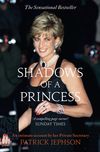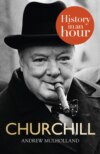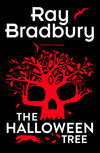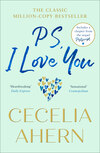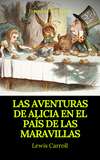Kitabı oxu: «Shadows of a Princess»

COPYRIGHT
William Collins
An imprint of HarperCollinsPublishers
1 London Bridge Street
London SE1 9GF
This eBook first published in Great Britain by William Collins in 2017
Copyright © 2017 Prospect Media Ltd
Cover photograph © Tim Graham / Getty Images
Patrick Jephson asserts the moral right to be identified as the author of this work
A catalogue record for this book is available from the British Library
All rights reserved under International and Pan-American Copyright Conventions. By payment of the required fees, you have been granted the non-exclusive, non-transferable right to access and read the text of this e-book on-screen. No part of this text may be reproduced, transmitted, down-loaded, decompiled, reverse engineered, or stored in or introduced into any information storage and retrieval system, in any form or by any means, whether electronic or mechanical, now known or hereinafter invented, without the express written permission of HarperCollins
Source ISBN: 978-0-00-825929-7
Ebook Edition © July 2017 ISBN: 9780008260125
Version: 2017-07-17
PRAISE FOR SHADOWS OF A PRINCESS
‘The most indelible, authentic word-portrait ever painted of the People’s Princess’
Daily Mail
‘Jephson’s revelations are important. They are a stark corrective to the baroque fantasies constructed around the Princess immediately after her death’
Evening Standard
DEDICATION
For Mary Jo, with love and thanks
CONTENTS
Cover
Title Page
Copyright
Praise
Dedication
Introduction to the 2017 Edition
Preface
PART ONE – IN
ONE Over the Top
TWO In the Pink
THREE Under the Thumb
FOUR Double Up
FIVE Double Take
SIX Toychest
SEVEN Gameplay
EIGHT Jump at Shadows
NINE Hot and Cold
TEN Roses
ELEVEN Guns
TWELVE Sphinx
THIRTEEN Truth or Dare
PART TWO – OUT
FOURTEEN Horribilissimus
FIFTEEN Payback
SIXTEEN Solo
SEVENTEEN Topple
EIGHTEEN Plummet
NINETEEN Under the Wire
TWENTY Over the Hills
Epilogue
Picture Section
Picture Credits
Index
About the Author
About the Publisher
INTRODUCTION TO THE 2017 EDITION
You may sometimes wonder why Princess Diana still casts such a long shadow over Britain’s thousand-year-old ruling dynasty. Like me, you may welcome it as a gentle reminder that her story remains relevant, an enduring example of the good things royalty can achieve, as well as a warning of the price it can exact. Or, like some others, you may feel her shadow upon you as an irritation, since it points to the inconvenient reality of Diana’s popular and it seems permanent place among the most admired names of recent history. A few in this second group would have us believe that Diana and her admirers are classic examples of the modern fashion for emotional incontinence – a betrayal of the traditional British stiff upper lip: that in reality she was flawed and frail, a symbol of weakness not strength, and so whoever replaces her in the national shop window must now be more deserving of our interest and approval.
Yet twenty years after her death, the memory of Princess Diana is still obviously alive and well. The world’s media are once again graced by her image and by tributes to how much she achieved in her tragically short life. The causes she championed – from mental health, old age and homelessness to AIDS, addiction and leprosy – are living tributes to her effectiveness as a globally admired force for good; and her greatest living legacies, her sons, are inviting us to remember her with gratitude and affection. In their words: ‘The time is right to remember her positive impact’, and their tributes to her – symbolized by the commissioning of a statue at Kensington Palace – strike a chord with ordinary people of all ages all over the world.
Like many she felt ill-prepared and untrained for the role in which she found herself. Alone in a tradition-bound environment in which her successes seemed to count for little and her errors for a lot, she believed she had been left to sink or swim. And but for her sons, her private life offered no consolation, with a husband who, it appeared to many observers, saw her as a rival to be feared rather than a companion to be cherished. Instead his energy, time and attention were devoted to the older, more experienced wife of a former courtier who, like many of their secretive social circle, seemed impervious to the vulnerable princess’s anguish.
No wonder Diana suffered from chronic self-doubt, poor self-image and a persistent eating disorder. Through her eyes, there was no comfort in the trappings and privileges of palace life, let alone the adoration of a world that praised her for virtues she never truly felt she possessed. She looked to her in-laws and the palace hierarchy for advice and support and too often found that goodwill on both sides couldn’t stop relations descending from misunderstanding to mistrust, and worse.
Of course, Diana was not perfect, and never claimed to be. As I had good reason to know, she could be a capricious employer who rightly expected a royal standard of perfection from her small and at times beleaguered support staff – just as she demanded it from herself. But though there were days when I wished I could have had a more conventional boss, I never doubted that she was well worth the toil, sweat and occasional tears. Her gutsy response to such a daunting array of misfortunes had won my lasting admiration, just as it earned her a deserved place in the hearts of millions around the world.
Finding herself in what amounted to a professional, personal and marital trap, she would have been forgiven for surrendering to despair. She could have looked into the future and seen herself as just a pitiable bystander, exiled to the shadows as her husband’s mistress claimed not just her place in his home and household but also eventually on the throne as joint head of state.
Instead, Diana discovered in herself reserves of strength and determination – at times even reckless defiance – to frustrate those who would have consigned her to the life of a royal cast-off. The hurt and indignation that might have destroyed her she chose to recycle as energy to power her life as a princess with a new purpose. As early as 1989, with her first solo overseas tour, when she went to New York and publicly identified herself with the plight of HIV-positive mothers and babies, she recognized that her predicament could be turned to good for outcasts everywhere – the lepers (real and metaphorical) who found in the glamorous figure from the fairy-tale world of palaces and gold coaches an unlikely but increasingly effective advocate.
I would sometimes ask her about her motives for diverting her brand of royalty into such unfamiliar and emotionally demanding new directions. ‘Don’t you see, Patrick,’ she would answer, ‘I can talk to them because I am one of them.’
And so she was: an outsider whom many insecure insiders wished they could control and, when they failed, wished they could airbrush out of the Windsor universe. Their chosen weapon was a vile diagnosis that she had a clinical personality disorder, a slur then systematically spread by royal spin doctors, and still whispered to this day by royal toadies. It would be hard to imagine a more cowardly attack on a woman who had already acknowledged her experience of conditions such as bulimia – an example of refreshingly sane self-knowledge now emulated by Prince Harry, to deserved universal applause.
Instead, they can reflect on the sight of her sons and daughter-in-law continuing her work of inclusion for those with minds in need of healing, or who for other reasons find themselves exiled from society. Perhaps now her detractors will recognize that the princess’s achievements deserve to be remembered happily and often; that they cast a welcome light on her children’s determination, like her, to find new ways to put their royal status to good use for good causes that might otherwise be overlooked.
Remembering Diana gladly is more than just legitimate and timely: it’s also required therapy for the future health of the monarchy, as the focus of national unity and symbol of the best British values. It’s not just about the need to learn from the past to avoid future mistakes, though that neglected skill should be second nature to royal advisers. It’s a principle even more fundamental to the long-term purpose and viability of the ancient royal experiment. It can be summed up in one word – a word traditionally synonymous with the British Crown, exemplified by Elizabeth II’s lifetime of service.
The word is decency.
Yet in some corners of the royal establishment, two decades of spin doctors and a naive fondness for the slippery arts of news management have put the word and the idea at risk. With his coronation plans already the subject of unfriendly speculation, especially on the divisive issue of Queen Camilla, Elizabeth’s successor faces an acceptability hurdle that some courtiers may be slow to recognize. A little perspective from recent history might guide them.
Diana alive was a decency test for the Windsors, which some of them failed; this book gives one close-up view of that failure, especially my part in it. But that failure need not lead to another: a Diana who lives on in the hearts of her admirers worldwide is a test tomorrow’s monarchy can yet pass. Success, as her sons have shown, only needs royal people to rediscover the authentic, uncontrived decency that hallmarked the monarchy’s finest hours in the twentieth century, and which is still its best hope for what may be even more testing times in the twenty-first and beyond.
Leaving aside such lofty thoughts, back in 1987 when this story starts there was no doubt in my mind that Charles and Diana were the best thing to happen to the monarchy in my lifetime. The perfect royal superstar double act. And so they were. Try to keep that image in mind as you read what follows, and draw your own conclusions about what might have been …
Patrick Jephson
PREFACE
For more than seven years, from 1988 to 1996, I shadowed the Princess of Wales. As her private secretary – her closest adviser – I was with her throughout the events leading up to her separation from Prince Charles. I helped her carve out a new life as an independent Princess on the world stage. I watched her struggle with enemies from outside as well as others, more murky, that threatened her from within.
As the darkness finally gathered around her, our paths parted. By then she was standing in her own light, obscuring the way ahead for herself and for many who would have acknowledged her as a global force for good.
Since her death in 1997 I have come to question the credentials of some of the self-appointed guardians of her thoughts, motives and values. It seemed to me that history was recording an image which bore little resemblance to the Princess I knew better than most.
It is common sense, not treason, to believe that the truth will do her no harm now. Neglecting the truth will profit only those who seek to gain, personally, financially or constitutionally, from letting the weeds of misrepresentation slowly overgrow her memory.
Of the many others who shared those years with me, I ask forbearance where their recollections differ from mine. Of the many more who did not, I ask nothing but an open mind. What follows, so far as it lies in my power, is the truth.
Patrick Jephson
PART ONE
IN
ONE
OVER THE TOP
The Princess of Wales was watching the man with unusual intensity. She leaned forward in her chair, anxious not to miss any of the action she had just been promised. Her eyes widened with anticipation.
The man obviously did not know he was being watched, but he was ill at ease, definitely shifty. He seemed to be waiting for someone, and was losing patience. He took a few paces to the left, then a few to the right. He scratched his tangled, dirty hair and looked anxiously up and down the street. I did not like the look of him.
Then a second man appeared, dodging between a couple of pedestrians. If anything, the newcomer was even more nervous. He looked jumpy and his arms made strange twitching movements as he spoke rapidly into the other man’s ear. They seemed to be making some kind of deal because I saw money changing hands, but I could not hear what they said. Suddenly they were walking off together, slipping into a deserted alleyway next to the station. Still they did not know they were being watched.
What happened next made the Princess shriek with a kind of thrilled horror. As we watched, with a final furtive look around, the first man loosened his jeans and crouched forward. There was a look of fixed concentration on his face. For five seconds he did not move. I had just realized he was defecating when his hand disappeared down the seat of his pants and emerged a few seconds later clutching a small package. Quickly he passed it to the other man, clearly his customer. Then, without a backward glance, the pusher adjusted his belt and returned to his position on the street.
The police officer stretched across the Princess and switched off the video with a click. Her hands were still clutched theatrically to her face, the shock of what she had seen still obvious in her eyes as she peeped from between her fingers. She caught my glance and giggled. Obscenity usually made her giggle.
‘Ugh! Talk about a video nasty. I hope you arrested him.’
‘Oh, he’s an old friend, Ma’am. And so are most of his customers. We keep them under surveillance with these TV cameras. Then we move in when we’ve got the evidence we need.’
The inspector stood up and reached for his leather jacket. There was a whiff of aftershave. He looked every inch TV’s idea of an undercover cop. I had noticed the Princess register his star quality as we arrived at his office half an hour earlier. That was good. An attractive male lead always brought out the best in our unpredictable royal performer. ‘If you’re ready …’ he said, heading for the door with an athlete’s easy grace. His amused expression promised further treats in store.
The Princess followed him meekly. Her eyes were demurely lowered, as if to retain the image she had just seen. I knew she was enjoying herself – she was fascinated by the forbidden.
Two minutes later we were outside on the late rush-hour streets of King’s Cross. Night had fallen. It started to rain. Out of the darkness a solitary flashbulb popped. I heard the Nikon’s motor drive as my boss reacted with a loud sigh of exasperation. ‘Oh! Wretched press! They follow me everywhere.’ The plaintive note was easy to hear. Too easy, I thought. You’re overdoing it. But it earned her a sympathetic look from our handsome guide, so that was good too.
As we moved unnoticed into the hurrying crowds, I took up my familiar position slightly behind the tall figure with the expensively casual hairdo. Tonight she was in black jeans and a short, sexy jacket. This was our version of incognito. The Princess of Wales, icon of the oppressed and champion of the socially excluded, was beginning another ‘secret’ fact-finding tour.
Tramping round King’s Cross that night, I felt again the familiar wrench in my gut. It always came when I thought of where the Princess had been and where she was going. The sensation was becoming much more frequent. It was the same feeling you get on a roller coaster as it stops climbing and begins to dive towards the ground.
She had been so high: the future Queen. Now she was still high, at least with the people we were meeting on the street, and the papers said she was a phenomenon – the looks of a supermodel and the heart of a saint. But I knew the truth.
I had seen many saintly things done in her name, and even if she was not exactly saint material herself – as she would be quick, even too quick, to agree – she had certainly done a lot of suffering. Not all of it had been done in public either, as some would have you believe. Now, however, she was floundering. Where once she had been the ideal young wife and mother, now she was a self-proclaimed adulteress. Where once she had been worshipped by charities, now she was worshipped for her photo-spreads. Where once she had summoned Air Force jets, now she cadged lifts in planes smelling of rich men’s cologne.
True, there were always going to be causes begging for this kind of celebrity patronage; and she had built up deep reserves of public sympathy. She still had that magical forgivability. But I knew these were the gifts more of others’ mistakes than of her shining virtues. I knew she had begun to believe her own publicity, just as I was believing it less and less. I feared that others, like me, were every day seeing more of the steady fraying of her fragile mental stability, and I felt there was now no way back to the happy certainties of my early days at the Palace.
How had it all changed? Eight years earlier it had all been so different – another world, almost another universe.
Autumn 1987. Somewhere on the long journey from Scotland I had lost my cuff links. Summoned from the frigate Arethusa while she was pausing in her patrol to refuel in a stormy west-coast sea loch, I had taken a boat, two buses, an aeroplane and a taxi to reach the Kensington hotel that was my base for the coming ordeal. Along the way the cuff links, with their family crest and a wealth of sentimental value, had disappeared, never to return.
Some frantic improvisation was called for. Dejectedly I substituted collar studs, one of the archaic pieces of kit which gave the Navy its charm for me. It seemed a bad omen, not least because in those days any meeting with royalty was a signal for sartorial precision of the highest order. This was no ordinary meeting either: it was a job interview. By some quirk of fate, I had been chosen – along with five others – as a candidate to be the next equerry to the Princess of Wales.
I knew little about what an equerry actually did, but I did not greatly care. I already knew I wanted to do the job. Two years on loan to the royal household would surely be good for promotion, and even if it was not, it had to be better than slaving in the Ministry of Defence, which was the most likely alternative.
I wondered what it would be like to work in a palace. Through friends and relatives I had an idea it was not all red carpets and footmen. Running the royal family must involve a lot of hard work for somebody, I realized, but not, surely, for the type of tiny cog that was all I expected to be.
In the wardroom of the frigate, alongside in Loch Ewe, news of the signal summoning me to London for interview had been greeted with predictable ribaldry and a swift expectation that I therefore owed everybody several free drinks.
Doug, our quiet American on loan from the US Navy, spoke for many. He observed me in sceptical silence for several minutes. Then he took a long pull at his beer, blew out his moustache and said, ‘Let me get this straight. You are going to work for Princess Di?’
I had to admit it sounded improbable. Anyway, I had not even been selected yet. I did not honestly think I would be. ‘Might work for her, Doug. Only might. There’s probably several smooth Army buggers ahead of me in the queue. I’m just there to make it look democratic.’
The First Lieutenant, thinking of duty rosters, was more practical. ‘Whatever about that, you’ve wangled a week ashore. Jammy bastard!’ Everyone agreed with him, so I bought more drinks.
While these were being poured, my eye fell on the portraits hanging on the bulkhead. There were the regulation official photographs of the Queen and Prince Philip, and there, surprisingly, was a distinctly nonregulation picture of the Princess of Wales, cut from an old magazine and lovingly framed by an officer long since appointed elsewhere. The picture had been hung so that it lay between the formality of the official portraits and the misty eroticism of some art prints we had never quite got round to throwing away. The symbolic link did not require the services of one of the notoriously sex-obsessed naval psychologists for interpretation.
As she looked down at us in our off-duty moments the Princess represented youth, femininity and a glamour beyond our grey steel world. She embodied the innocent vulnerability we were in extremis employed to defend. Also, being royal, she commanded the tribal loyalty our profession had valued above all else since the days of King Alfred. In addition, as a matter of simple fact, this tasty-looking bird was our future Queen.
Later, when that day in Loch Ewe felt like a relic from another lifetime, I often marvelled at the Princess’s effect on military people. That unabashed loyalty symbolized by Arethusa’s portrait was typical of reactions in messes and barracks worldwide. Sometimes the men gave the impression that they would have died for her not because it was their duty, but because they wanted to. She really seemed worth it.
So this is where she lives, I thought. I stood by the gates to Kensington Palace (or ‘KP’ as I came to call it) and looked up the long drive to where another set of gates – the security barrier – guarded the entrance to what is in fact a kind of royal compound.
The usual picture the public sees of KP is only one short face of a rectangular complex of buildings. Behind this facade – the favoured backdrop of TV reporters doing a Princess Di story – lies a warren of courtyards and gardens. Around these are an assortment of grand state apartments and smaller private apartments where the Waleses, Princess Margaret and other royal people have their London homes.
I suppose, if you have to live in a palace, this is the one to choose, in London at least. It sits at one end of Hyde Park, and if you look out of a window facing north, east or south the view is mostly of trees and grass. If you look west you can see the smart houses in ‘Millionaires’ Row’. Insulated from the noise of London’s traffic, I discovered that it was a tranquil spot, especially in summer. On a fine day the only noise was of birds and crackling police radios – sometimes punctuated by the shouts of William and Harry riding their bikes, or by the penetrating laughter of the Princess of Wales, as she stood at the front door telling a new joke to her personal protection officer before revving up her convertible and racing off.
I had imagined that the heir to the throne and his family would live somewhere elegant and spacious, in an atmosphere of restrained grandeur. I pictured French windows leading onto a lawn and perhaps a smaller version of the terrace I knew they had at Buckingham Palace. In fact, their apartment did not have much of a view at all. Tucked into the heart of the Palace complex, it was surprisingly dark. The Princess had a love–hate relationship with it. It was convenient for her public work and for shopping, and it was secure. But by 1987 it was the backdrop to a dying marriage and its walls had heard too many angry words.
Not only was the apartment dark and viewless, it was also surprisingly small. Everybody could hear everybody else. If you needed to get away from someone, there was just not enough space. The reception rooms were no bigger than you would expect in any smart town house and the private quarters were very unpalatial. Although I did not yet know it, the Prince had already moved out of the matrimonial bed and into his dressing room.
Most of the time the house was still. The Prince and Princess were usually out and the staff retreated to their places behind the scenes. Bursts of sudden activity broke the stillness, however. Every royal arrival or departure was marked by the slamming of doors, the bustle of domestic staff and, as often as not, the anxious pacing of the private secretary. Meanwhile, in the sewing room, the pantry, the kitchen and the nursery (not to mention the brushing room, the police room and the cellar) a large staff unobtrusively maintained a style of life that had changed little in a hundred years. Yet if you sent the staff home, closed the curtains and forgot to turn on all the lights, no amount of TV channels, loud music or ringing telephones could keep the darkness at bay.
Of course the house had been made comfortable – especially if you like lime-green carpet – but unless you had all the lights on, even in daytime it was gloomy. The Princess’s sitting room was the sunniest in the house. Its tall windows looked down on a pretty walled garden where she sometimes relaxed on summer evenings (though her favourite place for sunbathing was on the roof terrace). It also looked down on the front door so she could see or hear everybody approaching. She had very acute hearing. Inside, it was a grown-up version of a teenager’s room. There were two pink sofas by the fire and a smart writing desk by the window, but there were also soft toys, cushions that said ‘Good girls go to heaven – bad girls go everywhere’, and children’s school paintings on the walls. Every flat surface had photos, Halcyon Days enamel boxes or Herrend figurines crammed on to it. It was cheerful, girlish and very cluttered. It smelt good too. There were always flowers – lilies were a favourite – as well as potpourri and scented candles.
She must have been in her sitting room that day as I made my cautious approach to the anonymous black door that was to be my entrance to the world of the Waleses. I tried to look calm on the outside, as if I turned up at palaces every day, but inside I was quaking … and curious.
Before going back to the reality of my very different life in the Navy, I decided to enjoy this unexpected opportunity for as long as it lasted. I would use the chance to find out as much as I could about this woman who fascinated millions of people who had never met her and never would do so. I was not fascinated myself; not really. I already knew that would not be an advantage for anyone trying to work for her. But if I was going to have to meet this beauty, about whom I had unavoidably read and heard so much, I might as well make the most of the experience.
Nervously, I tried to check my reflection in the opaque window of the front door. I had an idea that equerries to Her Royal Highness the Princess of Wales were several inches taller than me in their Gucci loafers and carried a reassuring air of labradors and sports cars. They certainly did not lose their cuff links.
Summoning up all my stiffening thoughts, I pressed the bell. I could not hear if it had rung, so after several minutes I pressed it again, just as the door opened to reveal the Prince of Wales’s butler. He was about my height and wore a dark blue jacket with the Prince of Wales’s cypher on the lapels. He looked politely unimpressed. ‘Oh yes,’ he said. ‘Come in.’
Later, I came to know Harold Brown well and grew to admire his professionalism. At home and abroad, he quietly bore the hundreds of little stresses that came with dealing with his royal employers at their less attractive moments. His gift as a mimic had me crying tears of laughter into my whisky on many foreign tours. That afternoon, however, he was every inch the guardian of his master’s privacy and impassively allowed me to follow him to the Equerries’ Room where I was to await the royal summons.
Like so much of the apartment, although undeniably comfortable and well appointed, the Equerries’ Room was dark. Clever effects had been achieved with concealed lighting, pastel colourings and flowers, but the over-riding impression was one of pervasive gloom.
Two people were already there – the Princess’s lady-in-waiting, Anne Beckwith-Smith, and her current equerry, Richard Aylard. They were there to examine me as a possible recruit to their exclusive way of life. During the last few days they had been examining five others as well, of course, so they were understandably distant, if polite.
I was polite too – this was surely part of the selection process – and determined, like the butler, to look unimpressed. But I did need to go to the loo. Badly.
Groping in the semi-gloom of the cloakroom, I became the latest visitor to fumble for the trick light switch on a fiendish trompe l’oeil before finding the real switch on the wall behind me. The humour continued on the other walls, where original cartoons celebrated the Prince of Wales’s talent for self-deprecation. Other pictures showed the Prince and Princess in mostly military group shots, and the image of country-house-style domestic harmony was completed with some equestrian prints. Looking more closely, however, I could not help noticing that even the most recent photograph must have been at least five years old and all the cartoons featured a distinctly bachelor Prince.
Of course I had read the tabloid rumours about the marriage – there had recently been a furore about a visit to a badly flooded area of Wales, when the couple’s visible estrangement had been more of a story than the floods themselves. Like practically everyone else in the wardroom, I had also tittered over Sylvie Krin’s imaginatively romanticized reports in Private Eye. But nobody really knew what was happening. Everybody just assumed that, whatever their private difficulties, the Prince and Princess would stoically maintain the outward unity that was expected of them.
